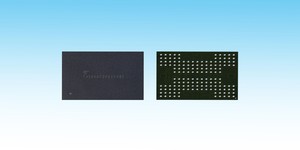
The wholesale price of NAND flash components has continued its global slide, dropping by up to 10 per cent in just two weeks in a decline projected to continue into the future - despite manufacturers restricting supply to boost prices.
Although NAND flash, the critical component of solid-state drives (SSDs), continues to prove a popular alternative to traditional spinning-rust mechanical storage devices - and, in the case of highly-portable devices like smartphones and tablets, the only real choice - it isn't selling quite as well as its manufacturers had hoped. A slowdown in sales has hit prices hard, and although manufacturers have been restricting their output in an effort to decrease supply and increase pricing stockpiles are continuing to grow.
The result, market watcher TrendForce has claimed in its latest DRAMeXchange report on the memory market, is a slide that will wipe out recent price increases altogether. In the second half of August, the company claims, contract prices for NAND flash components have dropped by up to 10 per cent, and that will continue through to the end of the year as additional manufacturing plants come on-line ahead of what manufacturers are hoping will be a boost to demand.
TrendForce is placing the blame for the dip, which is threatening to wipe out gains made when manufacturers noticed a threat of oversupply last year and slashed their manufacturing rates to compensate, on poor sales in the laptop market. According to the company's projections, the laptop market will end the year 10 per cent down compared to 2012 - and that drop is exactly the opposite of what NAND flash makers had been hoping.
The company is even warning that a raft of product launches - with numerous manufacturers due to launch new tablets, smartphones and hybrid devices in the coming weeks - may not be enough to correct the oversupply situation, meaning a continued slide well into October and even November.
For consumers, this could be good news in the short term: a drop in contract prices means a lowered bill of materials for device manufacturers, which in turn could allow for reduced retail prices. In the long term, however, NAND flash manufacturers are likely to constrain their supplies even further - and if a sudden spike in demand occurs, prices could rocket to well above their high at the start of the year.
Although NAND flash, the critical component of solid-state drives (SSDs), continues to prove a popular alternative to traditional spinning-rust mechanical storage devices - and, in the case of highly-portable devices like smartphones and tablets, the only real choice - it isn't selling quite as well as its manufacturers had hoped. A slowdown in sales has hit prices hard, and although manufacturers have been restricting their output in an effort to decrease supply and increase pricing stockpiles are continuing to grow.
The result, market watcher TrendForce has claimed in its latest DRAMeXchange report on the memory market, is a slide that will wipe out recent price increases altogether. In the second half of August, the company claims, contract prices for NAND flash components have dropped by up to 10 per cent, and that will continue through to the end of the year as additional manufacturing plants come on-line ahead of what manufacturers are hoping will be a boost to demand.
TrendForce is placing the blame for the dip, which is threatening to wipe out gains made when manufacturers noticed a threat of oversupply last year and slashed their manufacturing rates to compensate, on poor sales in the laptop market. According to the company's projections, the laptop market will end the year 10 per cent down compared to 2012 - and that drop is exactly the opposite of what NAND flash makers had been hoping.
The company is even warning that a raft of product launches - with numerous manufacturers due to launch new tablets, smartphones and hybrid devices in the coming weeks - may not be enough to correct the oversupply situation, meaning a continued slide well into October and even November.
For consumers, this could be good news in the short term: a drop in contract prices means a lowered bill of materials for device manufacturers, which in turn could allow for reduced retail prices. In the long term, however, NAND flash manufacturers are likely to constrain their supplies even further - and if a sudden spike in demand occurs, prices could rocket to well above their high at the start of the year.

MSI MPG Velox 100R Chassis Review
October 14 2021 | 15:04








Want to comment? Please log in.